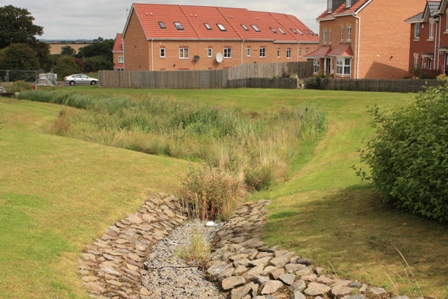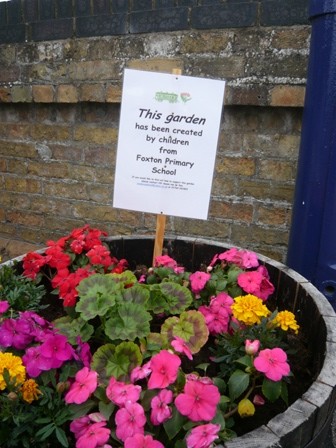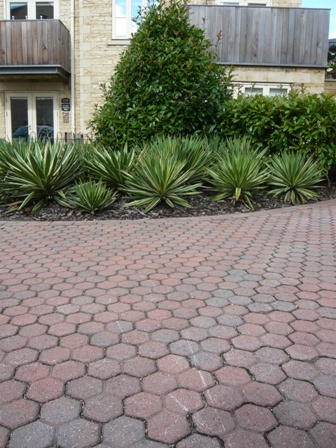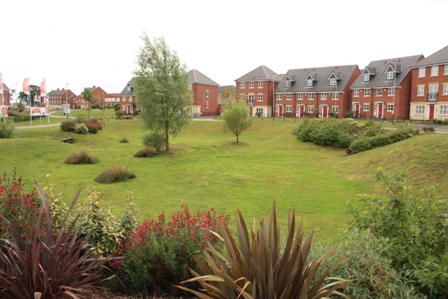- Delivering SuDS
- Using SuDS
- Background
- SuDS principles
- Benefits of SuDS
- Benefits of SuDS
- Why developers should choose SuDS
- Flood risk management
- Water quality management
- Biodiversity & ecology
- Amenity
- Air quality
- Building temperature
- Carbon reduction and sequestration
- Crime
- Economic growth
- Enabling development
- Flexible infrastructure/climate change adaptation
- Education
- Groundwater recharge
- Health and well being
- Pumping wastewater
- Rainwater harvesting
- Recreation
- Tourism
- Traffic calming
- Treating wastewater
- SuDS components
- SuDS components overview
- Source control
- Swales & conveyance channels
- Filtration
- Infiltration
- Retention & detention
- Wetlands
- Inlets, outlets and control structures
- SuDS performance & monitoring
- Delivery
- The costs & benefits of SuDS
- Adoption & maintenance of SuDS
- Legislation & regulation
- Design guidance
- Retrofitting SuDS
- Drainage exceedance
- Home
- Delivering SuDS
- Using SuDS
- Delivery
- Design selection
Design selection
Sustainable drainage systems are designed using the same underlying principles of hydrology and hydraulics as traditional drainage systems, but also need to embrace the wider opportunities for managing water quality, environmental enhancement, amenity, community acceptance and urban design.
Principles
When selecting SuDS it is important to consider water quality, water quantity and amenity design criteria equally. There will not be a single "correct" answer: several options may meet the design criteria, and judgement will be needed. It may not be possible to maximise all three design criteria as this is likely to reflect the opportunities and constraints on site.
Selection and design of SuDS are multi-disciplinary processes. Unlike traditional drainage systems, factors that influence the final choice will include planning, water quality, water resource, architectural and landscape requirements.

The selection process
Once an initial assessment of the site has been made and the design strategies for the drainage system have been agreed, drainage components can be selected. The selection process in based on the principles that:

- The drainage scheme complements the overall vision for the site and management of surface water
- Drainage components will be used in series (the SuDS management train) to meet the design criteria for water quantity, quality, amenity and biodiversity
- Drainage components at the top of the management train are generally to be preferred to those further downstream
- There is no single correct solution; selection may be the result of site opportunities and constraints
- Mniimise the use of impermeable surfaces wherever possible
- Maximise opportunity for managing water at or near the surface
- Source control is preferred providing more natural drainage and integrating water into the built environment
The SuDS scheme should be inspired by the original drainage pattern and characteristics of the local area.
The SuDS scheme should be designed to facilitate maintenance and operation. The process is cyclical, and various factors have to be considered in increasing detail as a final solution is approached. The selection of individual components and the SuDS scheme will depend on a variety of site attributes and factors including:

- local hydrology and hydrogeology
- ground contamination
- depth of water table
- soil permeability
- ground stability
- sensitivity of receiving waterbody (either surface water or groundwater)
- size of catchment area
- development type, density and required layout
- requirements for local flood risk management
- other opportunities within the overall site
- affordability of scheme (capital and operational)
Read more on:




